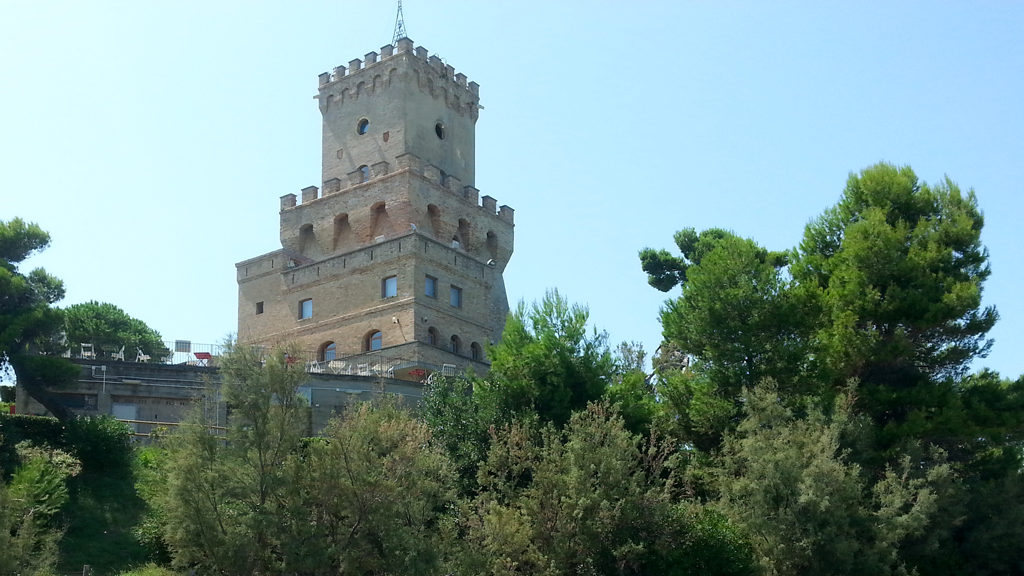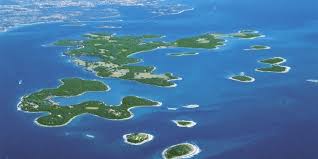Case Study
Growing together: Commonalities and difference between two Adriatic Marine Protect Areas.
Contact name
Roberto Piccirilli
Institution name
Alfred Toepfer Scholarship Awards 2015
Region & country
MPA Torre del Cerrano, Pineto, Italy; Brijuni National Park, Fazana, Croatia
Summary
The beauty of the Adriatic Sea makes the region an attractive place to live and work. Each year, more and more tourists spend holidays in the region. In addition to the maritime transport and fishery activities, tourist activities make the Adriatic Sea basin a crowded area both on land and sea. This could have an impact on the environment.
The present case study aims at disseminating knowledge on the management and development of two Adriatic marine protected areas; Marine Protect Area Tower of Cerrano (Italy) and Brijuni National Park (Croatia), and their relationship with the environment, humans “Local and tourist” and the efficient use of resources. The aim is to create a bridge of communication between two realities linked by the same Sea.

Torre del Cerano

Brijuni National Park
Background of the project
Many of the issues that affect the Adriatic ecosystem cannot be resolved directly by the MPAs. The typology of the territory and of problematic management puts emphasis on the governance of the Member States, which are often not able to cope with such risks.
Main issues:
- The increasing use of marine and coastal areas threatens ecosystems.
- Unsustainable tourism has a negative impact on water, soil and biodiversity.
- The shallowness and the semi-enclosed nature make the Adriatic Sea vulnerable to pollution.
- Overfishing, the equipment for the abandoned fishing and ecological aquaculture not much threaten marine biodiversity as human health.
- Untreated wastewater and solid waste of predominantly terrestrial origin, discharges of agricultural activities that cause eutrophication, invasive species from ballast water and the pollution originating from exploration for oil and gas worsen the situation further.
- Air quality, often worsened by climatic and local geographical conditions, is damaged by shipping emissions and the coastal activities (ports, industries).
- Illegal hunting of migratory birds has an impact on the entire UE.
- The networks of protected areas, such as Natura 2000, is not yet complete
The Adriatic Protected Areas need to develop new ideas and actions to help the management of the territory and resolve issues that have also an impact outside own borders and require a strong collaboration.
It remains clear that despite two Adriatic marine areas, the Brijuni National Park and the Marine Protect Area Torre del Cerrano show many differences at the naturalistic profile management, they share many managerial issues.
Below are the main challenges that both Marine Parks, like many others in Europe, are trying to address:
- Pollution
- Illegal fishing
- Excessive tourism
- Ignorance of local communities
All these issues have a heavy impact on terrestrial ecosystems but especially on the aquatic environment. Many species including protected species (Habitats Directive, IUCN) are strongly affected by all these human pressures.
Solution and actions taken
In this case, it was possible to analyze two Marine parks by identifying common problems in order to create a conservation plan and integrated management considering the habitats and protected species in common among the Marine Protect Area Torre del Cerrano and the Brijuni National Park. Two Marine species : the loggerhead turtle Caretta Caretta and the bottlenose dolphin Tursiops Truncatus, and Habitat reefs: Pinna Nobilis and Poseidonia Beds.
In this regard, the European Union provides several funds to work for the preservation of habitats and species, sustainable development, resource exploitation and fishing.
It is important to promote the Adriapan network of exchange of ideas and best practices and updating the existing databases, Geo Cetus.
It becomes essential to know and apply the rules and European directives on the environment strategies and marine habitats, Mediterranean coastal areas, fishing, and the efficient use of resources.
Develop possible actions to be undertaken in collaboration and cooperation:
- Geo Cetus Database Implementation (Cetacean Study Center and Aquarium of Pula, University)
- Information Days to fishermen about new fishery regulations use of new technologies and precautions to be taken in case of incidental catches of protected species. (MPAs, fishermen, Private Bodies)
- Possible reintroduction of species (Pinna Nobilis, Poseidonia Oceanica), monitoring of reintroductions, study on reproduction (Pinna Nobilis, Caretta Caretta and Tursiops Truncatus) and monitoring of water quality. (University and Research’s center).
- Investments and active involvement in the fight against pollution Earth (River Contract) and of merchant ships and fishing (fishermen, guides, stakeholders, internal and local community)
- Strengthening of the network Natura 2000 (AdriaPAN-MedPAN, MPAs)
- Improving solutions for tourists and information for sustainable tourism. (MPAs, European Charter of Sustainable Tourism)
- Create different economy with the possibility of enjoying the sea as “fishing tourism”. (Fishermen).
- Research and monitoring, exchange of information, best practices and publications. (University, private entities and Research’s center).
Other institutions or parties involved
- Marine Protect Areas Torre del Cerrano
- University of Teramo
- Brijuni National Park
- Aquarium of Pula
- Cetacean Study Center onlus
- Citizens of Pescara (IT)
- Citizens of Pineto (IT)
- Citizens of Silvi(IT)
- Citizens of Fazana(CH)
- Citizens of Pula(CH)
Results
The hope now is that this case study is only the first step towards future collaborative activities, for European Union financed projects, to create a communication channel for any issues relating to the Adriatic Sea with the aim of extending the solutions, new ideas and concrete actions to all the other Adriatic partners that collaborate with AdriaPAN and MEDPAN Network.
Challenges
- The problem of pollution of the rivers remain the most serious; this requires a more extensive management than that of a single MPA.
- The relationships with the anglers in particular with binders of Adriatic clams remain tense
- The lack of fish and the economic problems affecting the MPA, which regulated part of the former fishing area and failed to offer a real economic conversion to tourism.
- Fishing off the coast remains a danger due to bycatch and incidental catches of protected species Caretta Caretta and Tursiops truncatus, the fishing equipment remains primitive, ignorance of the anglers and the failure to report any catches. Fishermen do not respect the protocols approved for the preservation of the species.
- Tourism is quite impactful
- The technology in prevention and in information as an interactive museum, thematic workshops and information days are the objectives to be pursued.
Lessons learned
- The management of MPAs is essential for the preservation of the marine ecosystem and coastal environment.
- The MPAs may be used as a standard in the monitoring of biodiversity loss due to human action.
- The MPAs are an ecosystem that must be preserved over time; some good practices carried out should also be extended outside the protected boundaries.
- The MPAs contribute to the mitigation of climate change and coastal erosion.
- Many times, the principles of MPAs clash with those who most have enjoyed the sea
- An ecosystem must be protected from upstream to downstream, the river monitoring is essential to combat pollution.
- The collaboration between marine parks is crucial for the protection of shared species that live and exploit the entire Adriatic basin.
- It is necessary to update and allocate fishing techniques with less impact.
- The development of ecotourism could sustainably meet economic demand.
- The MPAs may have a guide by following the principles of sustainable development in the European Charter.
Contact name
Roberto Piccirilli
Institution name
Alfred Toepfer Scholarship Awards 2015
Website(s)
